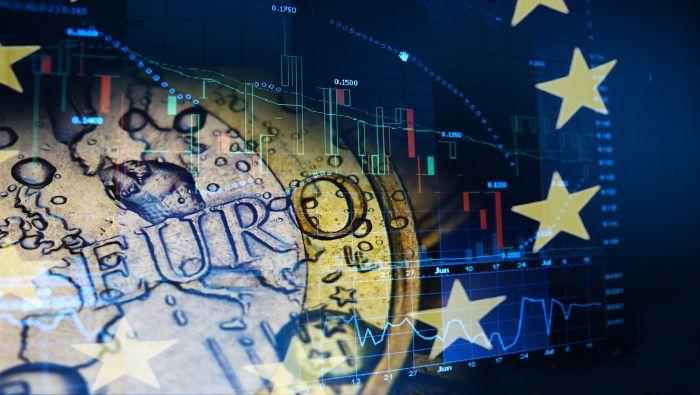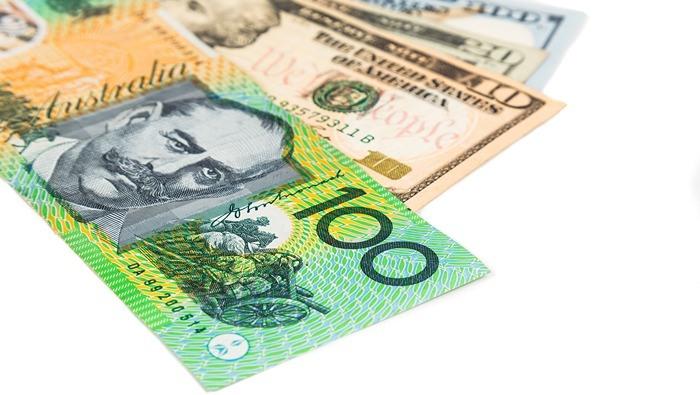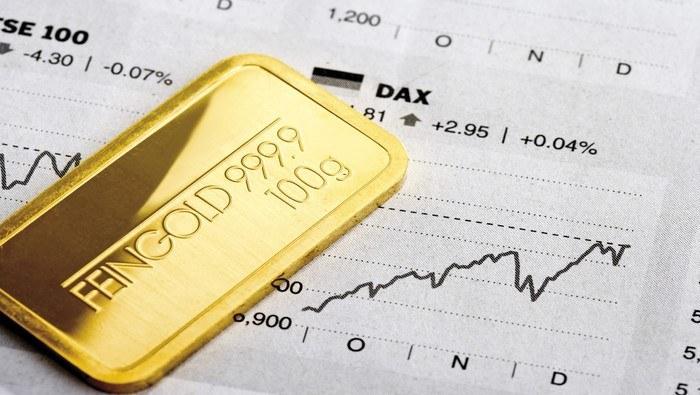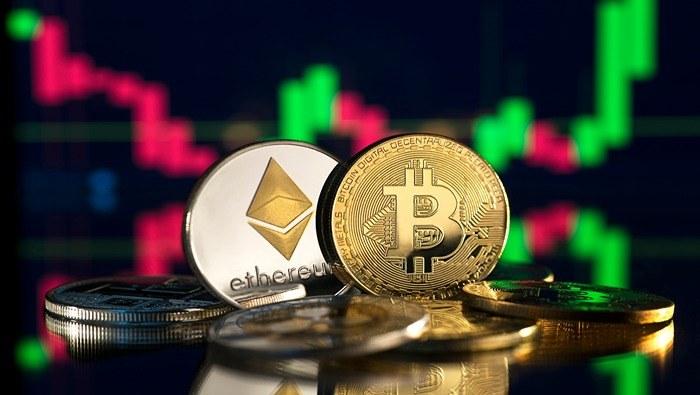2024-03-30 14:30
Crude Oil Q2 Fundamental Outlook Crude oil prices may continue to rise 2024’s second quarter but they remain subject to the considerable near-term uncertainty that dogged them as the year got under way. The Organization of Petroleum Exporting Countries and its allies (the so-called ‘OPEC +’ grouping) have agreed to extend their production cuts of 2.2 million Barrels Per Day. Saudi Arabia is of course the groups’ serious muscle. Its voluntary one million BPD share of the reductions is set to be in place through to the end of June. These cuts are perhaps the primary reason why oil prices have risen this year. Keeping them in place will offer the market plenty of underlying support. OPEC is no longer quite the arbiter it was, however, and supply from outside the cartel will inevitably blunt the effect of production cuts within it. That said US oil production hit a record in December 2023. It may well have nowhere to go but down from there, at least in the near-term. That prospect may embolden OPEC to stick with production cuts, knowing that they’ll be that much more effective. Demand Picture Looks More Hopeful Oil prices retreated from 2022’s highs as the Covid pandemic, rising inflation and higher interest rates added up to a well-supplied market meeting highly uncertain demand. This year perhaps promises some better balance. Overall petroleum demand is expected to rise, even if the market’s key players can’t agree on the likely extent of this. OPEC thinks it’ll be 2.25 million BPD this year, while the International Energy Agency forecasts a much more restrained 1.1 million. That’s a significant difference of view. There are also signs that Chinese demand is getting back to pre-pandemic levels. In the western industrial economies, inflation’s grip is relaxing and there’s broad central banking consensus that interest rates have peaked. Falling rates and cheaper credit ought also to be good news for energy demand. Caution is warranted, however. Conflict in Ukraine and Gaza will continue to hit the energy market via any number of channels. Russia remains under Western sanction and Ukrainian attacks on its energy infrastructure appear to be increasing. JP Morgan has reportedly said that attacks have taken 900,000 BPD of Russian refining capacity offline and could add as much as $4/barrel of risk premium to the global market. Yemeni rebels continue to strike Western shipping, supposedly in support of the Palestinian cause. The fight against inflation may also take longer than markets currently expect, keeping interest rates higher for longer. The Federal Reserve still thinks borrowing costs will be markedly lower by year end, but it will be the hard inflation data which ultimately decide this. The fundamental outlook for crude prices may remain modestly bullish, but the path higher is likely to be an uneven one. https://www.dailyfx.com/news/crude-oil-q2-outlook-opec-s-cuts-will-keep-prices-underpinned-20240330.html

2024-03-30 07:30
Euro Poised for a Fundamental Change The European Central Bank will cut rates in the second quarter of the year and will continue to cut borrowing costs during the second half of the year if recent central bank rhetoric is to be believed. The financial markets certainly think that this is the most likely scenario and that is going to weigh on the euro in the weeks and months ahead. Euro Area Inflation is Seen Falling Further The latest ECB Staff Projections suggest the inflation will continue to fall further over the coming months and quarters with energy inflation ‘projected to remain in negative territory for most of 2024’, while food inflation is expected to ‘decline strongly from 10.9% in 2023 to an average of 3.2% in 2024’. With price pressures receding quickly, the European Central Bank now has added confidence, and flexibility, on the timing of their first interest rate cut. Euro area HICP inflation Source: European Central Bank Euro Area Growth to Remain Tepid this Year Euro Area growth is set to remain weak this year, according to a range of official forecasters, with the latest ECB projections suggesting a tepid 0.6% recovery for 2024. Recent data showed that the Euro Area economy expanded by a downwardly revised 0.4% in 2023, hampered by weak demand and elevated borrowing costs. The Euro Area’s largest member state, and the prior growth engine of the 19-member block, Germany, has been unable to boost economic activity to anything like its previous levels and is seen growing by just 0.2% in 2024. Recent comments from German Economic Minister Robert Habeck suggest that the economy is ‘in tricky waters and that Germany is coming out of the crisis ‘more slowly than we had hoped’, adding to fears that the German economy is flatlining. The German government originally forecast GDP growth of 1.3% in 2024. The German economy has been hit hard by weak export growth due to lower global demand and its prior dependence on Russian oil and gas. Germany ceased importing Russian oil and gas in late 2022 after Russia invaded Ukraine. Will the ECB Start Cutting Rates in June? At the last ECB Monetary Policy meeting in March, President Christine Lagarde admitted that while the Governing Council have not discussed rate cuts, they have begun ‘discussing the dialling back of our restrictive policy’. Ms. Lagarde also added that the central bank is making progress on pushing inflation towards target. ‘And we are more confident as a result. But we are not sufficiently confident, and we clearly need more evidence, more data…We will know a little more in April, but we will know a lot more in June’. This referencing of the June meeting saw market expectations of a rate cut at the end of H1 jump. Financial markets are currently showing a 64% chance of a 25-basis point move at the June 6th meeting, while the market is currently undecided if the ECB will cut three or four times this year. ECB – Probability Distribution Source: Refinitiv, Prepared by Nick Cawley With inflation moving further lower, and with growth weak at best, the ECB will start the process of unwinding its restrictive monetary policy at the June meeting, with a very real possibility of an additional cut at the July meeting before the August holiday season kicks in. The ECB will not be the only major central bank to start lowering borrowing costs this year, but it is very likely that they will be the first and this will leave the Euro vulnerable to additional bouts of weakness in the months ahead. https://www.dailyfx.com/news/euro-fundamental-forecast-ecb-will-start-cutting-interest-rates-in-q2-20240330.html

2024-03-30 04:00
Market Recap: Another Bad Quarter The Japanese yen took a beating during the first three months of 2024, depreciating sharply against the U.S. dollar, the euro, and the British pound, with the bulk of this weakness stemming from monetary policy divergence. While top central banks such as the Fed, ECB, and BoE kept rates at multi-decade highs to defeat inflation and restore price stability, the Bank of Japan stuck to an ultra-loose stance for the most part, amplifying the yield disparity for the Japanese currency. The chart below shows how USD/JPY, EUR/JPY, and GBP/JPY have performed year-to-date (as of March 21). It also showcases the widening yield differentials between the US, Eurozone, and UK 10-year government bonds and their Japanese equivalents – a bearish catalyst for the yen. Japanese Yen Performance and Yield Differentials in Q1 Source: TradingView, Prepared by Diego Colman BoJ Abandons Negative Rates in Seismic Shift A significant shift occurred towards the end of Q1. In a historic move, the BoJ raised borrowing costs from -0.10% to 0.00%-0.10% at its March gathering – the first hike in 17 years. This marked the end of the bank’s longstanding experiment with negative rates designed to stimulate the economy and to break the deflationary "mindset" of the Japanese people. In this meeting, the institution led by Kazuo Ueda also announced it would end its yield curve control regime and cease purchases of ETFs. The decision to start unwinding stimulus came after salary negotiations between Japan’s largest federation of trade union groups and the biggest corporations resulted in bumper pay hikes for workers in excess of 5.2%, the highest in more than 30 years. Policymakers believed that strong wage increases would foster durable economic growth, creating a virtuous spiral of sustainable inflation of 2.0% underpinned by robust domestic demand. Despite the BoJ’s pivot, the yen continued to wither, showing paradoxically little signs of recovery in the days that followed. The reason: markets perceived the central bank's liftoff as a "very dovish hike" and were betting that financial conditions would still remain extremely loose for a long period, meaning a very slow normalization cycle. According to their logic, this would ensure that Japan's yield disadvantage vis-à-vis other economies would be maintained for the foreseeable future. Clearer Skies Ahead The second quarter may herald a bullish shift for the yen, although this may not happen immediately. One potential driver could be the Bank of Japan's tightening campaign. Although the BoJ signaled neutrality and did not provide clear guidance on when to expect another rate rise after concluding its March meeting, the next adjustment could arrive in July or more likely in October, just as the Federal Reserve, the ECB and BoE begin to dial back on policy restraint. With the yen languishing at multi-year lows and rising oil prices globally, headline inflation in Japan, which accelerated to 2.8% y-o-y in February and marked the 23rd straight month being at or above BoJ’s target, could remain skewed to the upside. This situation, coupled with government officials' dissatisfaction with the currency's extreme weakness and desire to reverse the trend, increases the likelihood of seeing another BoJ move sooner rather than later. Traders may be underestimating this risk. There is another variable that could prompt the BoJ to take action earlier than many anticipate: reports that many Japanese companies are front-loading capital spending and rushing to obtain bank loans before lending costs rise again. All things being equal, this is positive development that could underpin economic activity and boost demand-pull inflation in the coming months, giving policymakers more confidence in the outlook to press forward with another hike. Repatriation of Funds Underway In recent years, Japanese investors, contending with Bank of Japan’s ultra-dovish posture and unorthodox monetary policy, had no choice but to deploy their capital oversees, dispatching more than $4 trillion of funds in pursuit of higher yields. Despite the significant currency-hedging costs associated with this strategy, it was the go-to option for local investors seeking more attractive investments opportunities abroad in quality assets. With the BoJ finally unwinding stimulus and other central banks going in the opposite direction, Japanese investors could soon start liquidating positions in foreign assets, repatriating funds to their homeland in an orderly process - a development that would boost demand for yens. This won't happen overnight, of course, but the reversal of trillion-dollar flows should be a tailwind for the yen in due course, paving the way for a more durable rebound. Fundamental Outlook Looking ahead to the second quarter, the yen appears better positioned for stability and a potential turnaround. This optimism isn't solely a result of the Bank of Japan's exit from negative rates. The imminent easing cycles of the Federal Reserve, European Central Bank, and Bank of England are poised to provide added reinforcement. With that in mind, we could see USD/JPY, EUR/JPY, and GBP/JPY drift progressively lower over the coming months. https://www.dailyfx.com/news/forex-japanese-yen-q2-fundamental-forecast-brighter-days-ahead-catalysts-to-watch-20240330.html

2024-03-30 00:30
AUD/USD Q2 TECHNICAL OUTLOOK AUD/USD remains in a long-term or ‘secular’ downtrend channel which has been in place since mid-February 2021. The base of this band has been very well respected, to the point where the relatively brief fall below it in the second half of 2022 looks like an aberration. The pair has support at the fourth Fibonacci retracement of the fast rise to those 2021 peaks from the lows of March 2020. That comes in at 0.6468. It’s notable that any return to the 0.70 handle or above this year would very likely see this downtrend broken. If this can occur durably it would clearly be significant for the Aussie. While a rise to those levels looks unlikely in the coming quarter, bulls may be able to build a base from which they can attempt it later in the year. AUD/USD Weekly Chart Source: TradingView, Prepared by David Cottle Disheartened by trading losses? Empower yourself and refine your strategy with our guide, "Traits of Successful Traders." Gain access to crucial tips to help you avoid common pitfalls and costly errors. AUD/JPY Q2 TECHNICAL OUTLOOK AUD/JPY has been rising quite consistently for the past two years, with that uptrend itself only an extension of the long rise seen since March 2020. That uptrend has now taken the Aussie to highs not seen against its Japanese rival for more than nine years. AUD/JPY has also nosed above an admittedly very broad trading band which had previously held since April 2022. If AUD bulls can sustain these levels, then the next key upside target will be the high of mid-November 2014, at 102.72. Still, gains have been rapid and some pause for consolidation may be seen in the near-term, even if they keep AUD/JPY in the upper half of its former trading range. The Bank of Japan rocked markets in March by finally stepping away from its zero-interest rate policy. However, as the Australian Dollar’s continuing rise shows, Japanese yields remain unattractive by comparison with peer currencies’ and will continue to do so for some time. AUD/JPY Weekly Chart Source: TradingView, Prepared by David Cottle https://www.dailyfx.com/news/forex-australian-dollar-q2-technical-outlook-aud-usd-and-aud-jpy-20240330.html

2024-03-29 21:00
Gold Price Q2 Technical Outlook Gold kicked off the first quarter of 2024 with solid gains, extending the positive momentum established in the latter part of 2023. During this upturn, XAU/USD soared to new all-time highs, decisively breaking past the $2,150 mark, and eventually reaching a peak of $2,222. Although prices have since experienced a slight retreat, the precious metal remains near record zone at the time of writing. While bullion’s technical profile continues to be bullish, with a clear pattern of higher highs and higher lows, caution is advised, with the 10-week RSI indicator signaling possible overbought conditions. When markets become overextended in a short period of time, corrective pullbacks often follow, even if they turn out to be temporary or relatively minor. In the event of a bearish shift, support can be identified at $2,145, followed by $2,070, as displayed in the weekly chart attached. Bulls will need to vigorously defend this technical floor; failure to do so may result in a retracement towards the 200-day simple moving average near $1,985. Further down, attention will turn to channel support at $1,920, then to $1,810. On the other hand, if bulls maintain control of the steering wheel and manage to propel prices higher in the coming days and weeks, initial resistance awaits at the $2,222 record high. While buyers may face difficulty breaching this barrier decisively, a successful breakout could invigorate upside pressure, paving the way for a move towards channel resistance at $2,255. Gold (XAU/USD) Weekly Chart Source: TradingView, Prepared by Diego Colman Silver Price Q2 Technical Outlook Silver also climbed during the first quarter, although its gains paled in comparison to gold's impressive surge. In any case, XAG/USD has arrived at the gates of an important resistance near the psychological $26.00 threshold following the recent rally, an area where bullish advances were repeatedly halted in 2023, as seen in the weekly chart below. Drawing from historical patterns, there's a high likelihood that XAG/USD may encounter rejection once more at this technical ceiling, where seller activity seems concentrated. However, should a breakout unfold, there's scope for a move towards $26.95, which represents the high point of 2022. Subsequent strength would direct attention to $28.75, the peak of May 2021. Alternatively, if the bearish scenario plays out and silver gets knocked back down from its current position, cluster support spans from $23.30 to $23.05. Here, the 200-day simple moving average aligns with the 38.2% Fibonacci retracement of the upward movement witnessed from 2020 to 2021. Below this floor, long-term trendline support at $22.00 emerges as the key focus, with $20.85 as the next target. Silver (XAG/USD) Weekly Chart Source: TradingView, Prepared by Diego Colman https://www.dailyfx.com/news/xau-usd-gold-silver-q2-technical-forecast-key-resistance-in-focus-as-markets-get-stretched-20240329.html

2024-03-29 17:30
Bitcoin traders have enjoyed the first quarter of 2024 with the largest cryptocurrency by market capitalization buoyed by the SEC approval of a raft of spot Bitcoin ETFs in early January. Bitcoin hit a fresh all-time high in March and volatility returned, boosting trading volumes and liquidity. Bitcoin Demand vs. Supply With the demand for Bitcoin increasing sharply, via heavy purchases by the eleven different spot ETF providers, the upcoming reduction in new BTC supply - the Halving expected in mid-April – could provide another positive dynamic. Continued demand and reduced supply will likely see the price of Bitcoin move higher still, albeit with periods of sharp price swings and heightened volatility. What is the Bitcoin ‘Halving’? Bitcoin Halving is a recurring event hardwired into Bitcoin's code that reduces the reward for mining new blocks by half every 4 years. This systematic reduction in the supply of new bitcoins entering circulation aims to increase scarcity over time. With Bitcoin's maximum supply capped at 21 million coins, Halving helps regulate supply. Historically, as these supply shocks hit the market, the reduced issuance of new coins coupled with constant or rising demand has exerted upward price pressure on Bitcoin. Halvings are therefore viewed as bullish events by market participants who anticipate price appreciation in their wake as the asset becomes incrementally scarcer over time. Past Halvings occurred in 2012 (reducing block rewards from 50 to 25 BTC), 2016 (25 to 12.5 BTC), and 2020 (12.5 to 6.25 BTC). The next Halving is expected around mid-April 2024 and will see block rewards drop from 6.25 to 3.125 BTC. Historical Bitcoin Halving Price Action November 28th, 2012 Halving Price - $13 --- 2013 Peak Price - $1,125 July 16th, 2016 Halving Price - $664 --- 2017 Peak Price - $19,798 May 11th, 2020 Halving Price - $9,168 --- 2021 Peak Price - $69,000 Ethereum Spot ETFs – Sitting on the SEC’s Desk While the Bitcoin spot ETF provided a wide range of investors an opportunity to own the asset, it also gave the SEC and ETF providers with a rough template for a range of new cryptocurrency ETFS. As we write, there are eight Ethereum ETF applications sitting with the SEC, with one by VanEck expected to hear on May 23rd if it has been finally approved or not. It may well be that these Ethereum ETFs are not even fully decided upon this year, or if they will cause the same demand shock that the Bitcoin ETFs produced, but they need to be followed in the months ahead. https://www.dailyfx.com/news/bitcoin-q2-fundamental-forecast-current-demand-supply-imbalance-is-driving-bitcoin-higher-20240329.html
